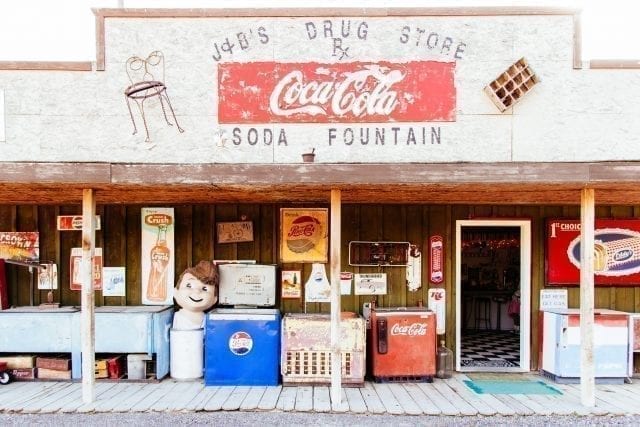
Shopping Addiction: How does it start and how to overcome it?
Shopping Addiction. Have you ever gone to the supermarket for a couple of things and ended up with a full shopping cart? Why are we so attracted to buying? What happens in our brain when we are buying?
Surely more than once you have spent more money than expected. What prompts us to buy compulsively? There are several factors involved and we will review them throughout this article.
Shopping Addiction: Why do we like to buy?
In a consumer society like the one we live in, buying has become not only a necessity but a leisure opportunity. “Go shopping” is an expression that already sounds familiar and is recognized as a playful moment and an occasion cultivate social relationships. This is one of the reasons why we buy compulsively because we relate this activity to a “game”, the purpose of this is to buy and spend money on products.
Shopping Addiction Causes: An obsessive need to spend
We have talked about a consumer society, but this is not enough to generate “real consumption”. What is essential is the need within the individual to shop. How is this achieved you might ask? Through advertising.
The advertising or messages we receive continuously, on their own, are harmless, but its goal is still to sell and that can create certain problems for some people. Lately, advertising campaigns have stopped selling products or services, to start selling principles. Where once a nougat was sold, now the campaign sells family values and family unity.
Human beings associative nature causes us to instinctively associate these values with the products they are selling us. The problem arises when principles such as happiness and personal satisfaction are associated with shopping by individuals with desperately seeking these values. Like alcoholism and gambling addiction (which is now affecting many young people), or many other disorders, the need to buy compulsively responds generally to an insane association of a dangerous habit (in excess ) with a fictitious feeling of “happiness”. That is when we have to realize that we have a problem.
Shopping Addictions: What decisions do we make when buying?
Although many are convinced that when they shop, they are shopping consciously, the reality is completely different. Emotional factors such as loyalty and trust come to light when we fill the shopping cart. We all have a favorite brand for different things and if those things are available we tend to buy more of them.
Addiction is a very serious problem that is a large part of our human behavior. Large companies and capitalism promote exploiting people addictive behaviors to make money. A good business model that will generate lots of revenue for a company usually exploits a persons addiction. Drug companies, fast food, and Big Tobacco are great examples of how the human addiction problem is exploited for corporate greed, but can we really blame them? Our free market capitalism rewards those that can use people to make more money, its just the way things are.
Do Brands Influence our Shopping Addiction?

In a study of the University of Houston, two well-known enemy brands of soda “Pepsi” and “Coke” were tested. The objective of the study was to verify to what extent the brand influenced the evaluation of the drink. Surely, by statistics, you prefer and/or buy Coke more often than Pepsi. And surely one of the arguments that support that decision is “the taste.”
However, this study showed that in a blind tasting, Pepsi is much better off than Coke in participant evaluations. Nonetheless, after discovering the brand, opinions still tipped the balance towards Coke. This is the perfect example of how issues without relative importance such as the brand, prevail over much more important factors like flavor, bearing in mind that what we are going to buy is a soda.
Shopping Addiction: Does price influence it?
The price is one of the most relevant factors when deciding whether to put something in the shopping cart or return it to the shelf. Price is a double-edged sword. On the one hand, it serves as a limit because it produces “pain” (how many times we have asked the shopping clerk how much something costs and almost died when you heard the answer). However, it also serves as a reference of quality. Does the following situation sound familiar?
- “Which one do you buy?”
- “Buy the one that is more expensive and will be better”
Since when is price an indicator of quality? Maybe if you are buying cereals this does not sound so familiar but what if we speak about wine? Unless you are an expert wine taster, more than once you have not known which to buy and surely you have spent a bit more than planned to make sure that “it is good”.
Watch the following video as an example of how sometimes we overrate wine when they are all usually the same.
Shopping Addiction: Do the quality and the price go hand in hand?
An experiment in Stanford University verified how the price can change our sensory perception. They did a systematized study similar to the one on the video and found out that marketing actions can modulate neural representations of experienced pleasantness. If we think of the previous sections about how brands influence us and how we interpret the price as a sign of quality, we get a perfect cocktail for shopping addiction.
Shopping Addiction: Why do we get carried away when buying?
There is no doubt that our emotions play an important role in buying, but why? The answer will seem simple: because we are programmed to buy.
To make decisions we use certain mental shortcuts to not overload our brain. In addition, we have a huge capacity for the association. Advertising campaigns take advantages of these aspects in order to make things seem necessary or attractive. The fact is that our brain does not often pay attention to decisions that it considers easy and, instead of reading the components of a shampoo, for example, it prefers to look at more simple details like familiarity or confidence leading to shopping without thinking.
Shopping Addiction: Tips on how to shop without going overboard
However, we can take advantage of some features of our mind to avoid spending more money than expected.
1. Buying with a credit or debit card is more comfortable, but studies show that you spend more than with cash. This is because you can carry your budget in cash and not be tempted to use more with your card. Your brain also collaborates with this since it has more trouble getting rid of tangible things, making it easier to control your spending.
2. Create a list of what you want to buy. If you go with a list you will have something to stick to however appetizing a product may be. This will help you resist because after all, if you don’t consider it necessary at home, then it probably isn’t.
3. Avoid going to the supermarket hungry. If you were to go hungry be prepared to go home with all sorts of unnecessary goods. If advertising is already aggressive, and we open ourselves to the temptation, we will fall easily into a shopping addiction.
Shopping Addiction: How does your brain fool you into buying more?
Companies have realized these characteristics of our brain and take advantage of them to maximize sales. Many business owners have started organizing their business so that the journey to the cashiers is clockwise, maximizing the sales. This is because the customer has to walk around the whole store, in order to pay.
There is a variety of products in every store, but excessive variety is counterproductive. Since our brain likes easy decisions, even though it sounds great to have seventeen brands of air freshener in a store, people will end up not buying any for not knowing how to decide.
In a clothing store, the same thing happens with one extra variable mirrors in clothing stores can change your image completely. You might try something on and feel wonderful in the store and then go home and realize it doesn’t fit properly. This is due to the type of mirror and light used in dressing rooms. Other examples of how we are encouraged to buy in establishments are:
- The price: adding decimals doesn’t change much the price but tricks our brain. For example, 99.99 euros is basically the same as 100 euros.
- The products: Items that are common and most needed such as bread or milk are the most hidden or occupy lower shelves. Meanwhile, leaving at eye level everything that is not strictly necessary.
- Music: The music choices in every store all well thought out. It is made to make you feel comfortable and happy.
Remember to always carry a list, cash or be aware of every aspect that might lead you to a shopping addiction. If you feel that your shopping is getting out of control it is important that you see a specialist.
This article is originally in Spanish written by Mario de Vicente, translated by Alejandra Salazar.














